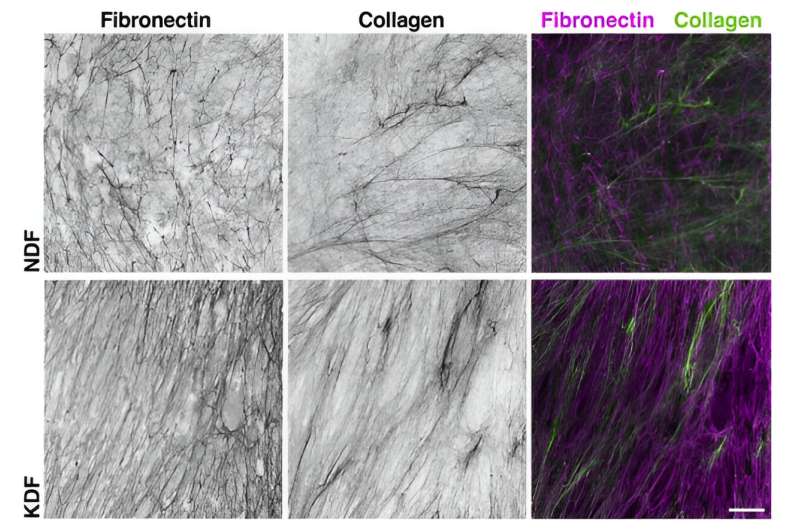This article has been reviewed according to Science X's editorial process and policies. Editors have highlighted the following attributes while ensuring the content's credibility:
fact-checked
trusted source
proofread
New insights from studying keloid scars could provide novel treatments for fibrosis

New research, published in Matrix Biology, has revealed a potential therapeutic target within keloid cells, which could provide new treatments for a range of skin diseases and fibrosis, including keloid scars.
Keloid scars are thick, raised scars that are formed from flesh wounds and are typically found on earlobes, shoulders, cheeks, or the chest. Treatment options are limited to removal via surgery, but the scars often regrow.
Using keloid scars as a model of fibrosis, the authors set to find new therapeutic targets by closely studying the extracellular matrix (ECM)—a fibrous network deposited by the cells that connects them to each other and provides a supporting scaffold. Keloid cells lay an ECM with altered structure and properties compared to healthy cells, specifically with a striking alignment of its fibers.
Led by Dr. Tanya Shaw, keloid tissue obtained from surgeries was used in the laboratory to exploit a "scar-in-a-dish" approach. After confirming growth and maintenance of their scar-like properties, the researchers were able to analyze keloid cells and their ECM to find new targets for therapies.
The results identified a role for a molecule called interleukin-6 (IL-6), typically associated with inflammation. In fact, targeting IL-6 with a drug already used in clinics to treat arthritis and COVID-19 was found to reduce the ability of keloid cells to generate aligned and bundled ECMs, suggesting it could be utilized as a therapy for keloid scars.
As well as revealing a new therapeutic target for keloid scars, the authors believe that this scar-in-a-dish approach could be used to screen for new inhibitors for a range of other forms of scarring and fibrosis, as bundled ECMs is a hallmark of many types of scarring found in tissues around the body.
In addition to these therapeutic implications, the results highlight how the structural support cells of the skin have the potential to cooperatively affect the physical properties of the tissue. This insight could have many applications within cellular biology, which the authors also hope to explore in further research. Moreover, they also report novel computational approaches to analyze alignment in bioimages open for use to the community.
"Research about scarring and fibrosis has historically been very focused on the over-abundance of ECM, with the highly aligned organization of the tissue largely ignored. We are excited to be highlighting this widely observed feature of scarring and to have discovered a strategy to potentially correct it," says Dr. Tanya Shaw.
More information: Fiona N. Kenny et al, Autocrine IL-6 drives cell and extracellular matrix anisotropy in scar fibroblasts, Matrix Biology (2023). DOI: 10.1016/j.matbio.2023.08.004


















